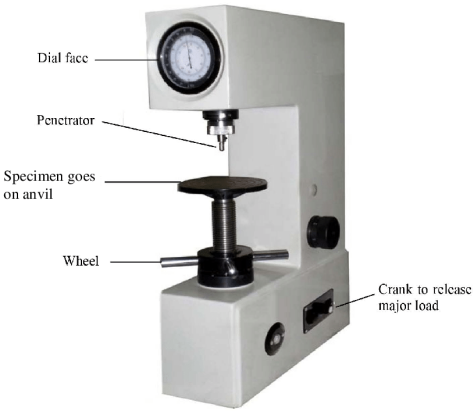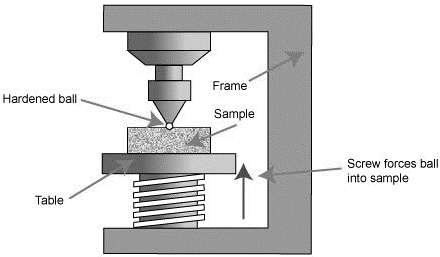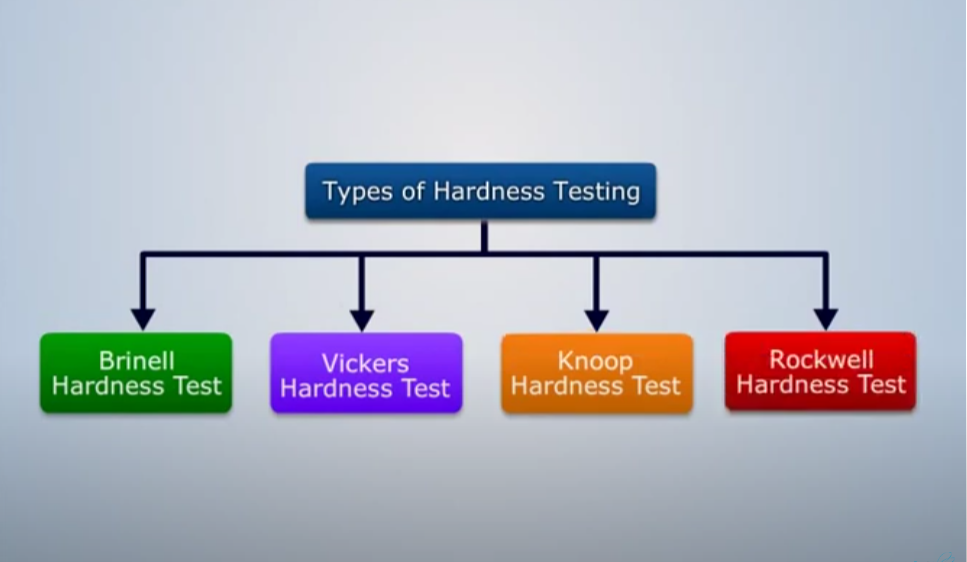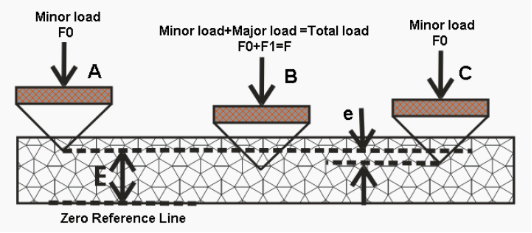Metal Hardness: Charts, Processes, and Testing
 Aug 23,2024
Aug 23,2024

Material hardness is a property to identify the indentation resistance and scratch resistance of surface. The hardness measurement determines the denting resistance from impact. This is in correlation with ductility and material hardness. Material will be less ductile if the hardness is high. measurement can be carried out by different hardness scale. It also determines the change in degree of hardness in material by heat treatment, precipitation and age hardening, tempering and many more.
Understanding Metal Hardness
Hardness measurement tells the material’s ability to resist localized plastic deformation and scratch resistance. Some metals like tungsten are inherently hard. It is also known as tool steel, so it is important to resist wear at higher or lower temperatures. or cemented carbide is also a cutting tool which is one of the hardest materials. Some metals are soft or less hardened like pure gold, silver, copper, aluminum. They can be bent or scratched without much effort. Heat treatments are carried out to increase material hardness. This induces surface hardness without reducing other mechanical features in metal. different hardness conversion chart is used to get better results.

Hardness testing machine
Metal Hardness Chart
Different metals tolerate different loading conditions depending on the type od hardness measurement method is used. Following is the hardness of common metals for indentation resistance and scratch resistance. The hardness conversion chart must be used to know different hardness scale.
|
Metals |
Rockwell hardness HRB |
|
Aluminum |
20-25 |
|
Copper |
10 |
|
Gliding metal |
32 |
|
Commercial bronze |
42 |
|
Jewel bronze |
47 |
|
Yellow brass |
55 |
|
Nicle silver |
60 |
|
Steel |
60 |
|
Cast iron |
86 |
|
Stainless steel |
88 |
|
lead |
5 |
|
Titanium |
80 |
Mohs Scale of Hardness
Mohs hardness scale is precise and accurate characterization of microstructural hardness. It determines material hardness for thin or layered metallic samples by using high loads. Mohs hardness testing can be carried out on tiny and small samples. All the samples with delicate and intricate designs can be evaluated by Mohs scale
Rockwell Hardness Scale
Rockwell hardness scale measures the strength and durability of metals. It is one of the common hardness measurement methods in hardness scales. This hardness scale measures resistance to deformation, indentation resistance and scratch resistance. It is a fast method to measure penetration depth.
Brinell Hardness Scale
Brinell hardness scale is one of the oldest methods of hardness measurement. It is specifically used for casting, forging, larger cross-sectional areas and rough materials. A large indenter is used which decreases the localized structural irregularities impact over the material surface.
Vickers Hardness Scale
It is most precise and accurate hardness measurement method which can be used over a variety of material. This includes metals ceramics and polymers. It is also suitable for soft and thin materials hardness measurement.

Hardness Conversion Chart
Material hardness measurement can vary with different types of loadings. The loadings can be microhardness or Mohs, Brinell, Vickers or Rockwell hardness testing. Hardness conversion chart is below:
|
Brinell hardness HB |
Rockwell HRC |
Rockwell HRB |
Vickers |
|
469 |
50 |
117 |
505 |
|
468 |
49 |
117 |
497 |
|
456 |
48 |
116 |
490 |
|
445 |
47 |
115 |
474 |
|
430 |
46 |
115 |
458 |
|
419 |
45 |
114 |
448 |
|
415 |
45 |
114 |
448 |
Processes to Increase Metal Hardness
There are few processes that can increase metal hardness without damaging other properties.
Work Hardening (Strain Hardening)
It refers to cold or strain hardening. This involves bending or straining of metal repeatedly to reduce the material plasticity. Material then becomes work-hardened and less ductile. It is carried out at room temperature. Some metals like nickel-titanium does not get strain handed but can be stress relieved
Anodization
Anodization for aluminum grades creates hardening effects. Anodizing final steps is hardening and sealing of surface by salt sealer. This enclosed the pores of oxide films and eventually creates hardening of surface. sealing also provides uniformity in the surface properties.
Solid Solution Strengthening
It refers to alloying process in which alloying agent is introduced in the material. this is entered in the material by heating but in a solid material. material is cooled down by quenching which increase the material hardness and reduce ductility.
Age Hardening (Precipitation Hardening)
It refers to process carried out after few days of casting of metal which undergo for a week. This is a natural age hardening process. Another way is to heat the metal for a short time at elevated temperatures. This stabilizes the properties and strengthen the alloy by increasing material hardness.
Case Hardening
It is a surface treatment produce to increase material hardness, indentation resistance and scratch resistance. this includes carburizing, flame hardening, cyaniding, nitriding to increase resistance to deformation in material.
Tempering
It refers to heat treatment process for cold worked materials. The grains undergo cold forming ad then stretched. It increases the material hardness and indention resistance of surface. this also depends on the nature of grains, yield strength and crystallization of material.
Back-Blasting
It refers to flattening of metal and increase the material hardness and resistance to deformation. It is suggested to carry out this process after forming to get better scratch resistance and hardness in metal.

Metal Hardness Testing: Methods & Scales
The hardness measurement can be done by Rockwell, Vickers, Brinell and microhardness method. Every method has high own advantages and suitable for unique purposes.
Overview of Common Hardness Tests
|
Hardness scale |
Advantages |
Limitations |
|
Brinell |
For larger castings |
Not suitable for small objects |
|
Vickers |
For every type of material |
not suitable for delicate designs |
|
Rockwell |
Common method of hardness testing |
No suitable for thin objects |
|
Microhardness |
For small, tiny and intricate designs |
Not suitable for small objects |

Selecting the Right Hardness Test
Depending on the loading conditions, following hardness scale must be selected
|
Hardness scale |
loads |
|
Brinell |
1-3000kgf |
|
Rockwell |
15-150kgf |
|
Vicker |
1gf-100kgf |
|
Knoop |
1gf-1kgf |
Challenges of Measuring Metal Hardness
There are few challenges to in hardness measurement.
Material Variability
Every type of material cannot be tested by any hardness scale. Vickers is suitable for a verity of material. But depending on size, shape and type of material, hardness measurement must be selected.
Surface Conditions
Surface of the material must be cleaned to measure the resistance to deformation. Most hardness cale are used for flat surface so curved surface cannot be measured easily.
 Tel/WeChat:
Tel/WeChat:  Email:
Email: 
 Home
Home
 What is GD&T? Purpose and Rules
What is GD&T? Purpose and Rules 







